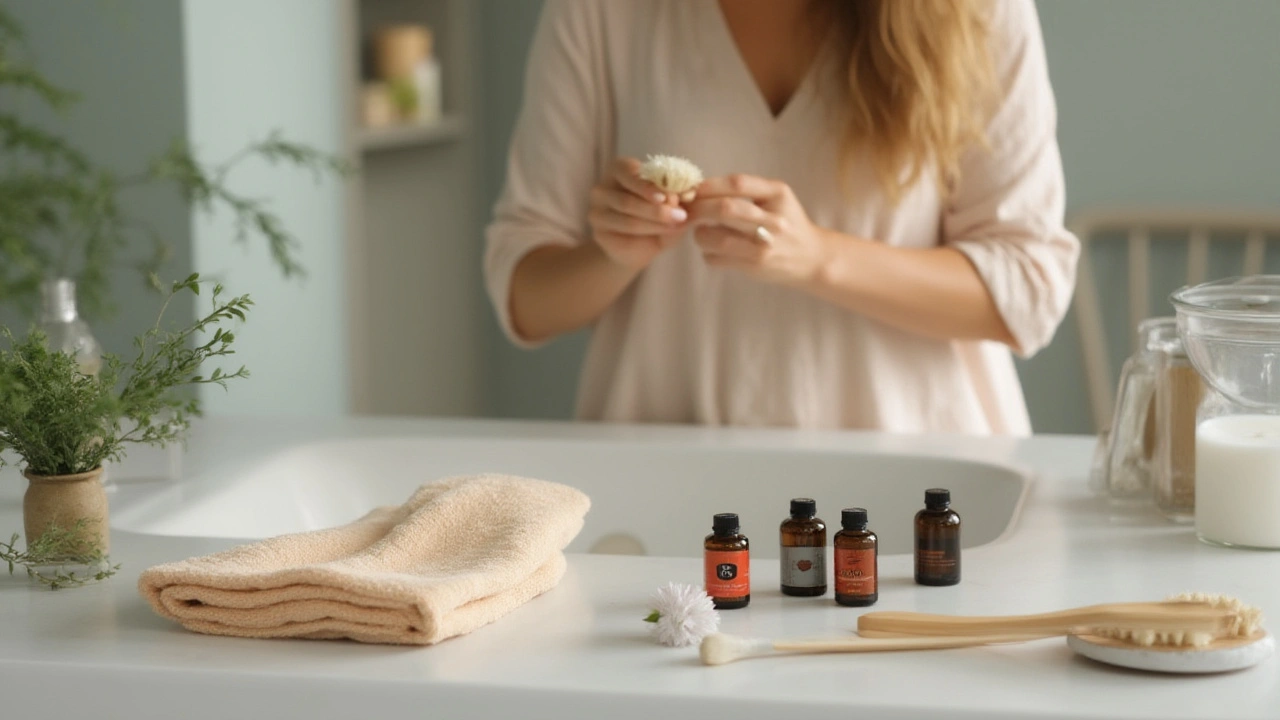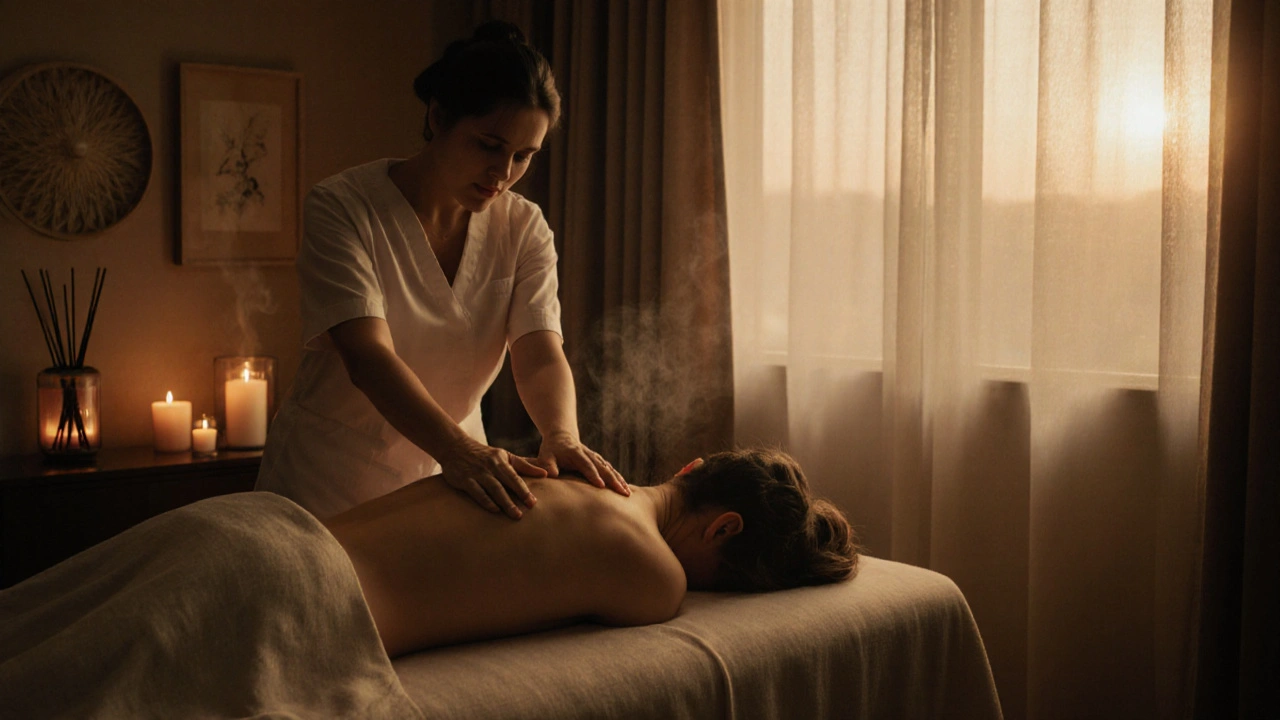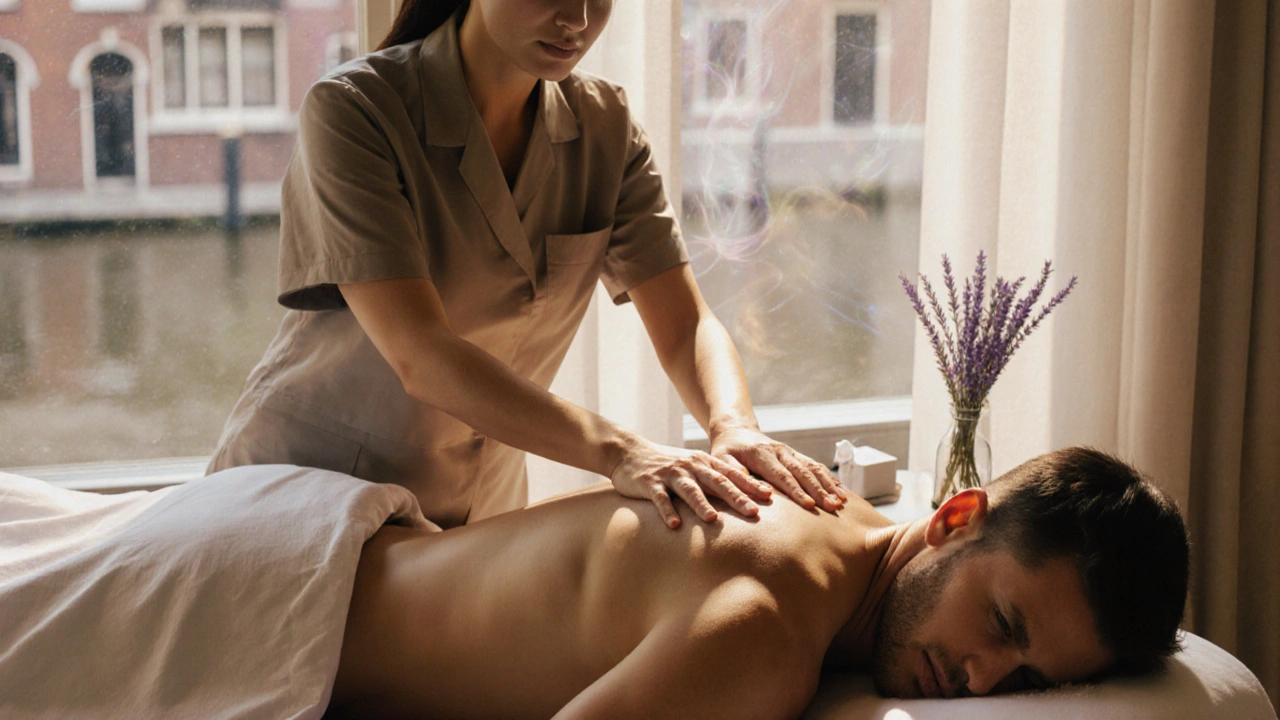Create a Relaxing Swedish Massage Experience at Home: Step-by-Step Guide

If you’ve ever had a pro Swedish massage, you know that post-massage glow—your muscles melt, your stress vanishes, and somehow your couch feels like a cloud. But maybe the spa’s fully booked, or your wallet’s feeling thin. What if you could bring all that bliss into your own home? No fancy massage tables or certificates needed, just a few simple tools and the know-how. Swedish massage isn’t just for the experts—anyone can master the basics and create a pocket of peace in their own living room.
What Is a Swedish Massage and Why Bring It Home?
Swedish massage is probably what pops into your mind when you picture classic massage: long, flowing strokes, a little kneading, maybe some gentle tapping. It goes way back to the early 1800s, credited to Swedish fencing instructor Per Henrik Ling. Unlike deep tissue massages, which dive into the tougher muscle knots, Swedish massage focuses on relaxation, lighter pressure, and increasing circulation. If you’re curious why it’s so famous, the answer is simple—it just feels fantastic, and it’s gentle enough for almost everyone.
Why bother setting this up at home? Life hacks, for one. You get to decide the music, lighting, and who’s on the receiving end. Plus, you skip the spa’s price tag and commute. If you’re nervous about giving or getting a massage, your own space means zero judgment. The best part—Swedish massage is surprisingly easy to learn, with most movements coming down to four basic techniques: effleurage (gliding), petrissage (kneading), friction (circular rubbing), and tapotement (rhythmic tapping). Once you get comfortable with those, you’ll wonder why you didn’t start sooner.
Here’s a quick snapshot comparing Swedish massage with others, so you can see how it stacks up:
| Massage Style | Pressure | Main Focus | Best For |
|---|---|---|---|
| Swedish Massage | Light-Medium | Relaxation, circulation | Stress relief, beginners |
| Deep Tissue Massage | Medium-Deep | Muscle knots | Athletes, chronic pain |
| Thai Massage | Varies | Stretching, energy flow | Active stretch, flexibility |
| Hot Stone Massage | Light-Medium | Relaxation, warmth | Mental unwinding, tension release |
At home, you’re in control. Light a candle or let the kids watch cartoons in the next room—it’s your call. People invent new at-home rituals every day, and this just might become your favorite.
Why You’ll Love a DIY Swedish Massage (Even If You’re Not a Pro)
Massage is about touch, not perfection—and science backs up its perks. Oxford University published research showing that regular massage can lower cortisol (your body’s main stress hormone) by up to 30%. One more reason to get those hands working.
But it’s more than stress-busting. Swedish massage boosts blood flow, which speeds up recovery after a hard workout or long day of desk duty. It helps relax tight necks from screen time, releases endorphins (those happy chemicals), and—here’s the kicker—can improve your sleep. A well-timed massage in the evening is like hitting your mind’s reset button.
If you’re caring for someone at home, Swedish massage is gentle enough for most bodies, from teens cramming for finals to older folks struggling with stiffness. Got a partner who always complains of sore shoulders? Or maybe your own lower back is shouting after too many hours gardening. This is the time you step up, oil in hand, and solve the problem the old-fashioned way.
Best part—regularly working these moves into your week is a powerful self-care ritual. Think of it as carving out a dedicated “me time” slot that feels both indulgent and practical. “Touch is a fundamental human need and one of the best ways to soothe the nervous system,” says Martha Stewart Wellness Editor-at-Large Simone Kitchens,
"A Swedish massage isn’t just a treat, it’s a reset for body and mood."

Setting Up Your Home Spa: Simple Tools for Swedish Massage
Time to bust a myth—nope, you don’t need a massage table, incense, or a home full of houseplants for this. Here’s what you actually need for a proper setup:
- Oil or Lotion: The cheapest bottle of unscented baby oil works wonders, but you can use almond, coconut, or sunflower oil too. Avoid heavy fragrances if you have sensitive skin.
- Clean Towels: For draping and comfort. Grab a towel or sheet to cover your work area, plus another to keep the person warm.
- Pillow or Bolster: Roll a towel or use a travel pillow to support knees or ankles, which helps the back stay comfortable.
- Relaxing Playlist: Classic spa sounds work, or queue up your favorite mellow album. Even podcasts, if that’s more your style.
- Warm Room: Nobody relaxes while shivering, so crank the heat or bundle up.
- Optional: Dim the lights, grab a candle, or use an essential oil diffuser for bonus points.
The golden rule? Comfort trumps everything. Whether you give or receive, make sure you’re both in a position that’s easy on the body. If you want to get fancy, there are budget massage tools—like a foam roller or massage balls—but honestly, your hands (clean and moisturized) are perfect for almost everything.
Remember to keep a towel handy to wipe off extra oil and a glass of water to hydrate after your session. Hydration helps your body flush out all those loosened toxins and keeps muscles happy.
The Essential At-Home Swedish Massage Routine—Step by Step
Ready to go hands-on? Even if you’ve never done this before, you can follow these simple steps. No certification required. Here’s a basic routine anyone can try, whether you’re massaging a loved one, a friend, or giving yourself a treat after a long day.
- Start with Effleurage (Gentle Gliding): Using both hands, start with long, sweeping strokes up the back or legs. This gets the blood moving and warms up the muscles. Keep your palms flat and fingers relaxed—you’re not kneading bread here.
- Move to Petrissage (Kneading): Once the skin feels warmer, switch to kneading. Pick up the muscle gently, squeezing and rolling it between your hands. Think about how you’d knead dough—slow, steady, never painful. This helps break up muscle tension.
- Go for Friction (Circular Motions): Now, using your thumbs or fingertips, work in small circles over tight spots like the shoulders or lower back. Pressure here should always feel good, not sharp or pokey.
- Tapotement (Rhythmic Tapping): Finish with gentle tapping along the muscles—use the sides of your hands or softly cup your fingers and drum. This wakes up the area, improves blood flow, and adds a little energy to the mix.
- Always End with Effleurage: Bring everything back to calm with more slow, gliding strokes. It’s a simple trick pros use to wrap things up and help the body switch from alert to relaxed.
Start slow and check in with the person you’re massaging. Communication is your secret weapon—nobody gets bonus points for powering through pain. If you’re flying solo, focus on your own neck, shoulders, forearms, and calves. Self-massage is just as legit and can make a shockingly big difference in your day.
Wondering how long this should take? Even 15-20 minutes can melt stress away, but feel free to go up to an hour if everyone’s comfy. There’s no rulebook—just listen to the body and enjoy the process.

Safety, Tips, and Keeping the Good Vibes Going
There’s nothing worse than hurting someone accidentally, so play it safe. If the person is pregnant, has blood clots, unexplained pain, recent surgery, or any medical conditions, check with their doctor before you start. Avoid bony areas, open wounds, or bruises. And don’t press too hard—Swedish massage should never feel like torture. “Tenderness is a signal to back off, not dig in,” reminds licensed massage therapist Larissa Hall Carlson.
It might sound obvious, but always ask how the pressure feels—never assume. Watch for clues like tensing up, wincing, or holding their breath. And if you’re massaging yourself, stop if you feel a sharp, shooting pain. Some tension is good, but pain means you’re going too deep.
Hydrate after the massage. Muscles release waste products as they relax, and water helps your body carry them out. Within an hour, sip a glass or two of water (not just coffee—your body will thank you).
Here are a few extras if you want to go pro:
- Warm the oil in your hands before applying—it feels amazing and builds trust.
- Stack towels under ankles or knees to relieve low-back pressure for the person lying face-up or face-down.
- If your hands start to ache, switch up your technique, or give them a break before resuming.
- Start light and work up to more pressure if the person asks. Everyone’s comfort level is different!
Once your session ends, take a few deep breaths. You’ve just nurtured both the body and mind—yours, theirs, or both. Let that feeling linger. “Massage is like pressing the reset button for your day,” says Simone Kitchens. And if you find yourself hooked, swap roles or invite a friend. Homes may not have a spa’s aesthetics, but with the right touch, they can definitely deliver the same peace.

